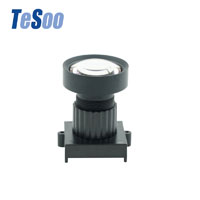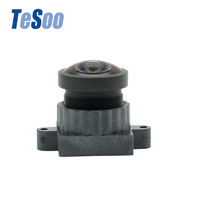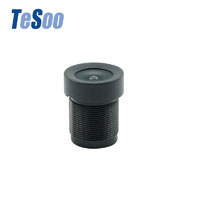Introduction to the Imaging Mode of Fisheye Lens
Ⅰ. The structure principle of fisheye lens
A fisheye lens is an extreme wide-angle lens, also known as a panoramic lens. It is generally considered that a lens with a viewing angle greater than 180° is a fisheye lens. However, in engineering, lenses with a viewing angle range of more than 140 degrees are collectively referred to as fisheye lenses.
In practice, there are also lenses with viewing angles that reach or even exceed 270 degrees. A fisheye lens is an anti-telephoto light group with a lot of barrel distortion. The front lens of this lens is parabolically protruding to the front, and the shape is similar to the eye of a fish, hence the name "fisheye lens", and its visual effect is similar to that of a fish observing things on the water surface. As a professional fisheye lens manufacturer, Tesoo provides many types high-quality fisheye lens.
Ⅱ. Distortion correction of fisheye lens
The fisheye lens obtains a large viewing angle by artificially introducing a large amount of barrel distortion, so as to obtain image information with a large viewing angle. Therefore, the shape of the object in the center of the image remains unchanged, and other parts that should be straight lines have certain distortions, which imposes many restrictions on its application.
For example, in the field of security, a fisheye lens can replace multiple ordinary lenses for large-scale surveillance. Since the viewing angle can reach 180º, there is almost no monitoring dead angle, and even with only one lens, there is almost no way to move or destroy the lens without being detected. However, due to the distortion of the image, the object is difficult to be recognized by the human eye, which greatly reduces the monitoring ability. Another example is in the field of robotics, automated robots are required to collect image information of surrounding scenes and identify them in order to take corresponding actions. If a fisheye lens is used, the acquisition efficiency can be increased by 2-4 times, but the general recognition software is difficult to apply due to the introduction of distortion. So we need some way to recognize the image from the fisheye lens.
One way is to do the recognition directly in the original image. For example, it provides an algorithm that can identify where the sun is in an image. However, due to the distortion, the characteristics of the same object will also change at different positions, which will increase the computational complexity of the software and make it difficult to recognize complex graphics. Therefore, the common method now is to cancel the distortion in the image through a series of transformations, so as to obtain a normal image and then identify it. Tesoo also provides non fisheye lens for customers' different needs.
Ⅲ. Application of fisheye lens
Originally, fisheye lenses were used in photography because of the special aesthetics of the barrel distortion it creates during imaging.
In recent years, the application of fisheye lens has been more used in the field of wide-angle imaging, such as in-vehicle, autonomous driving, surveillance, panoramic simulation, VR and so on. Compared with other systems, the fisheye lens has the advantages of light weight and small size, but also has the inconvenience of needing to eliminate the difference.
Popular Camera Lens
Hot Camera Lens Articles

 English
English 

